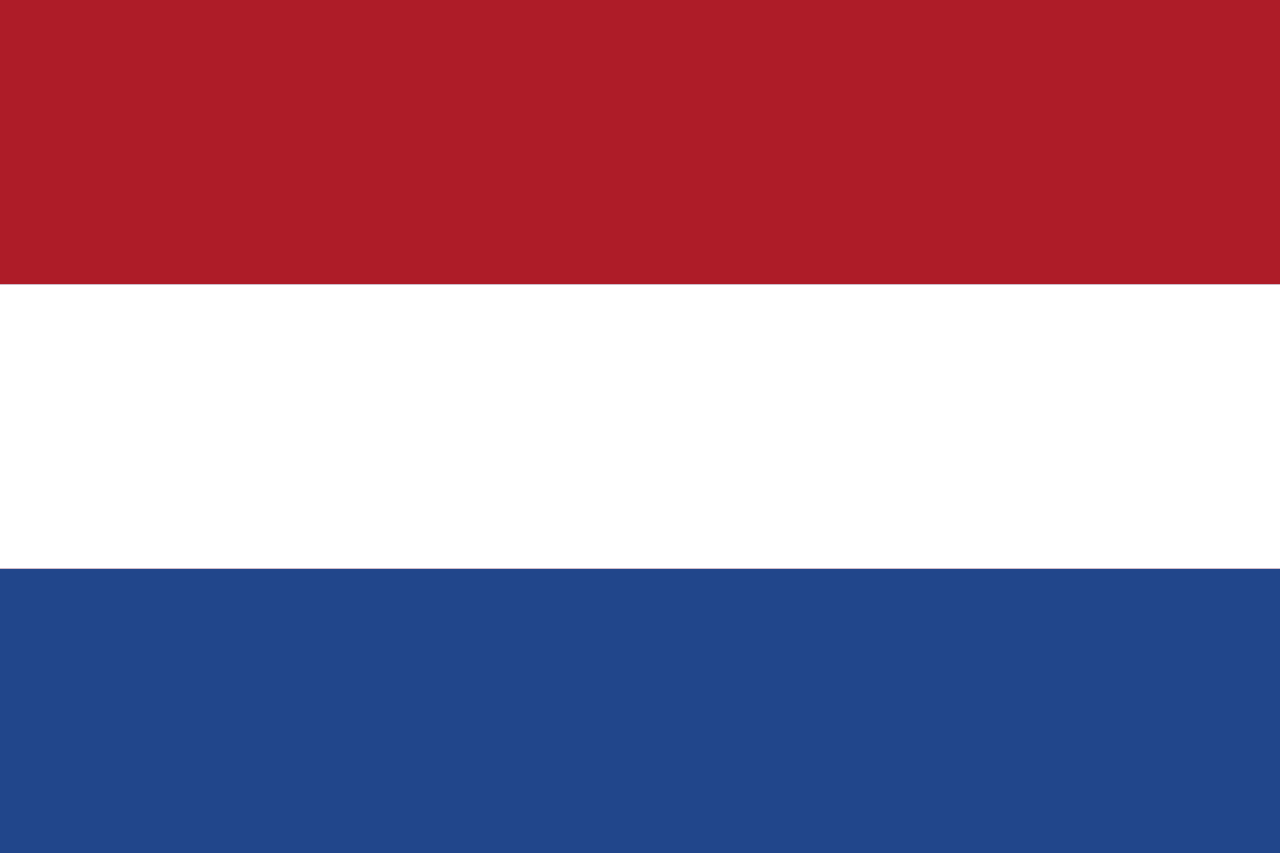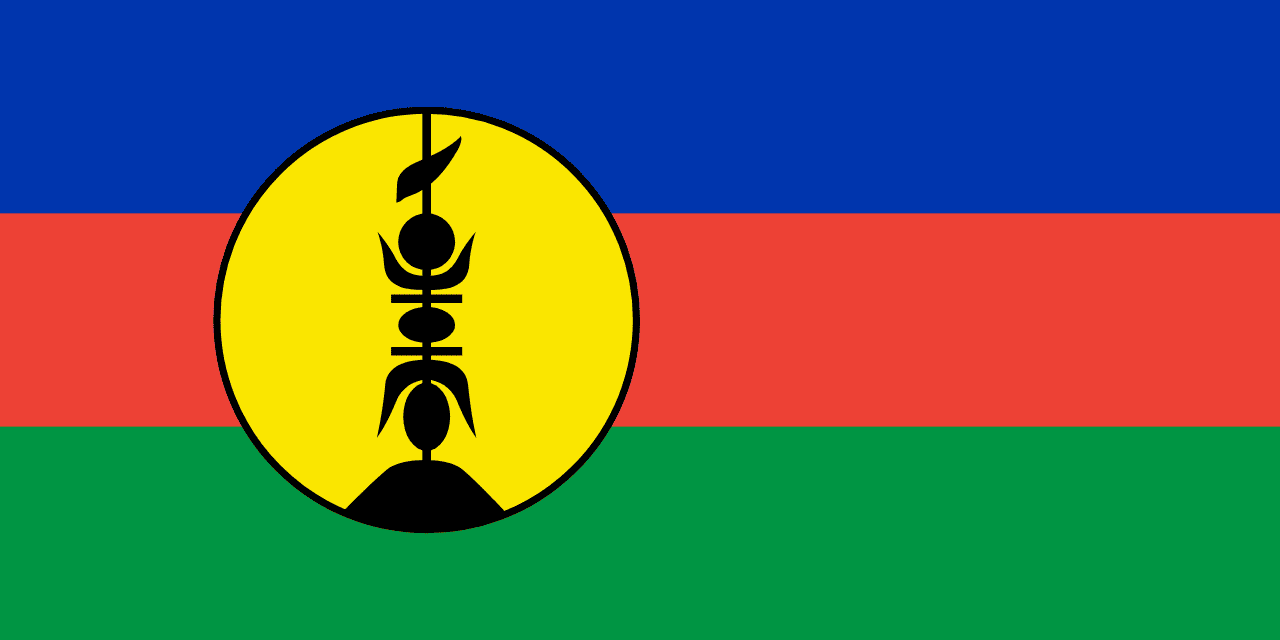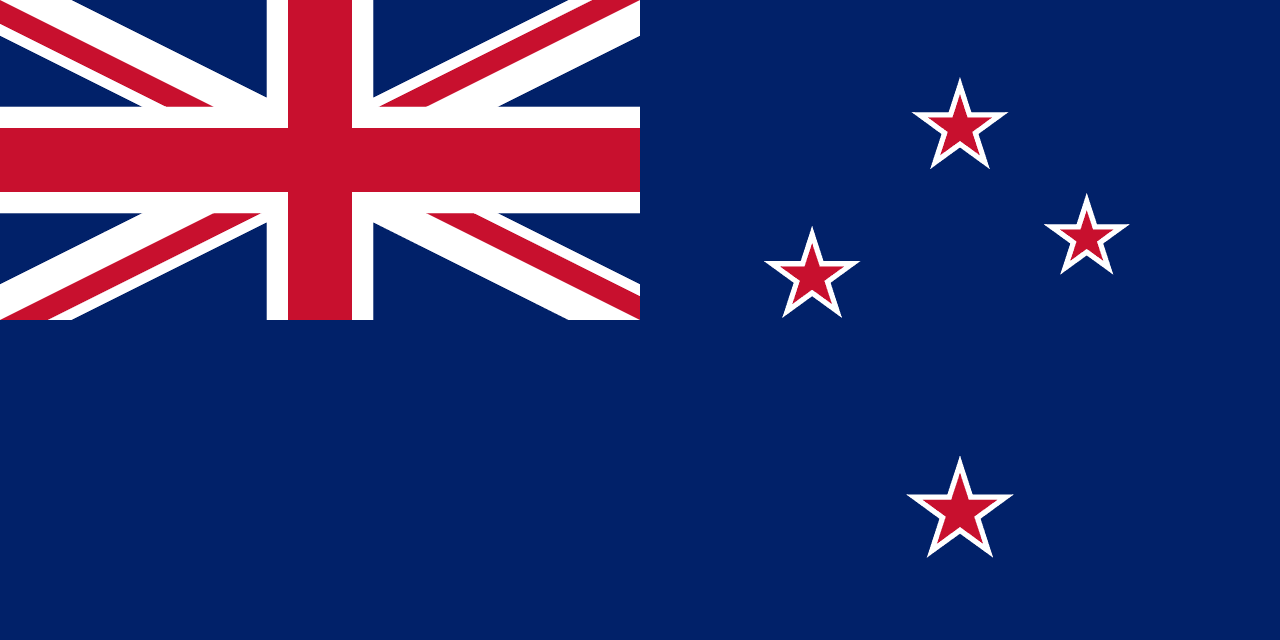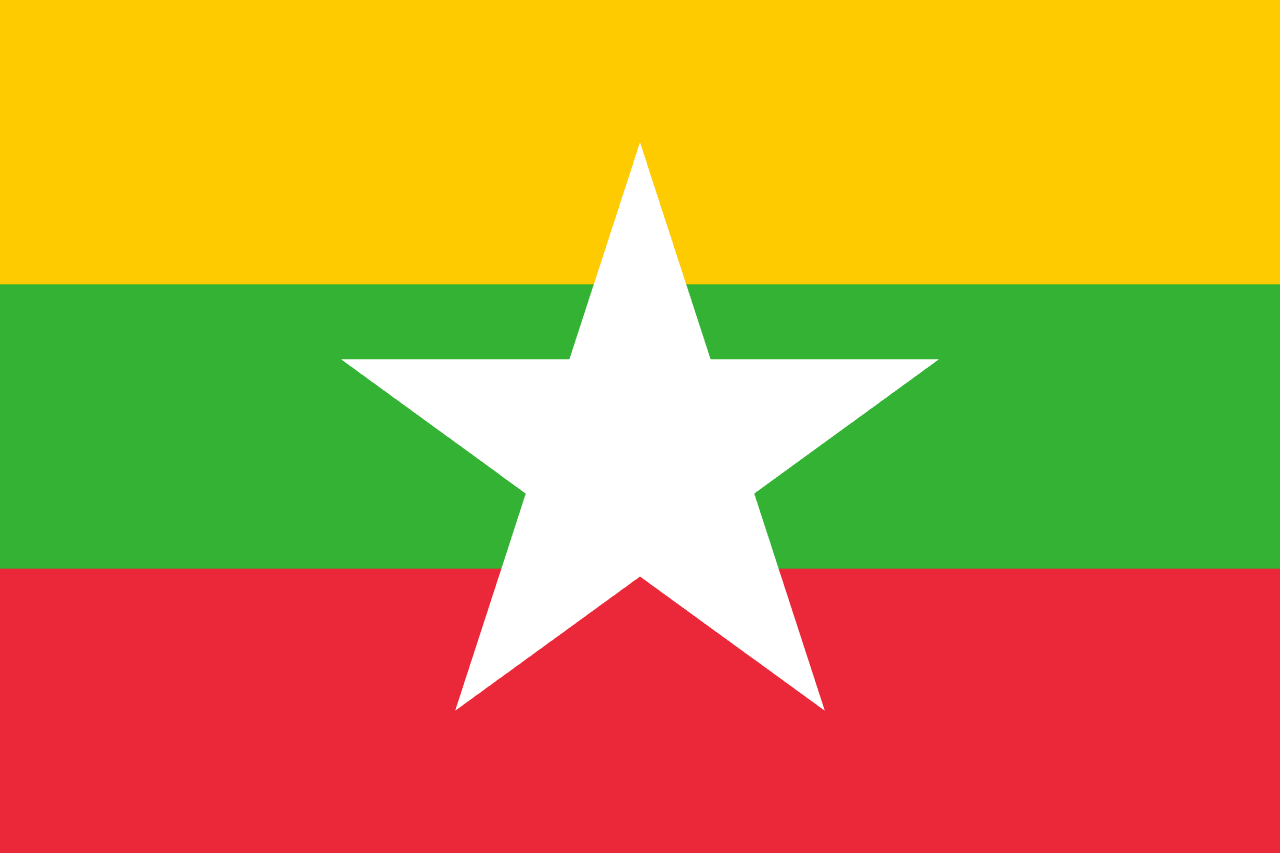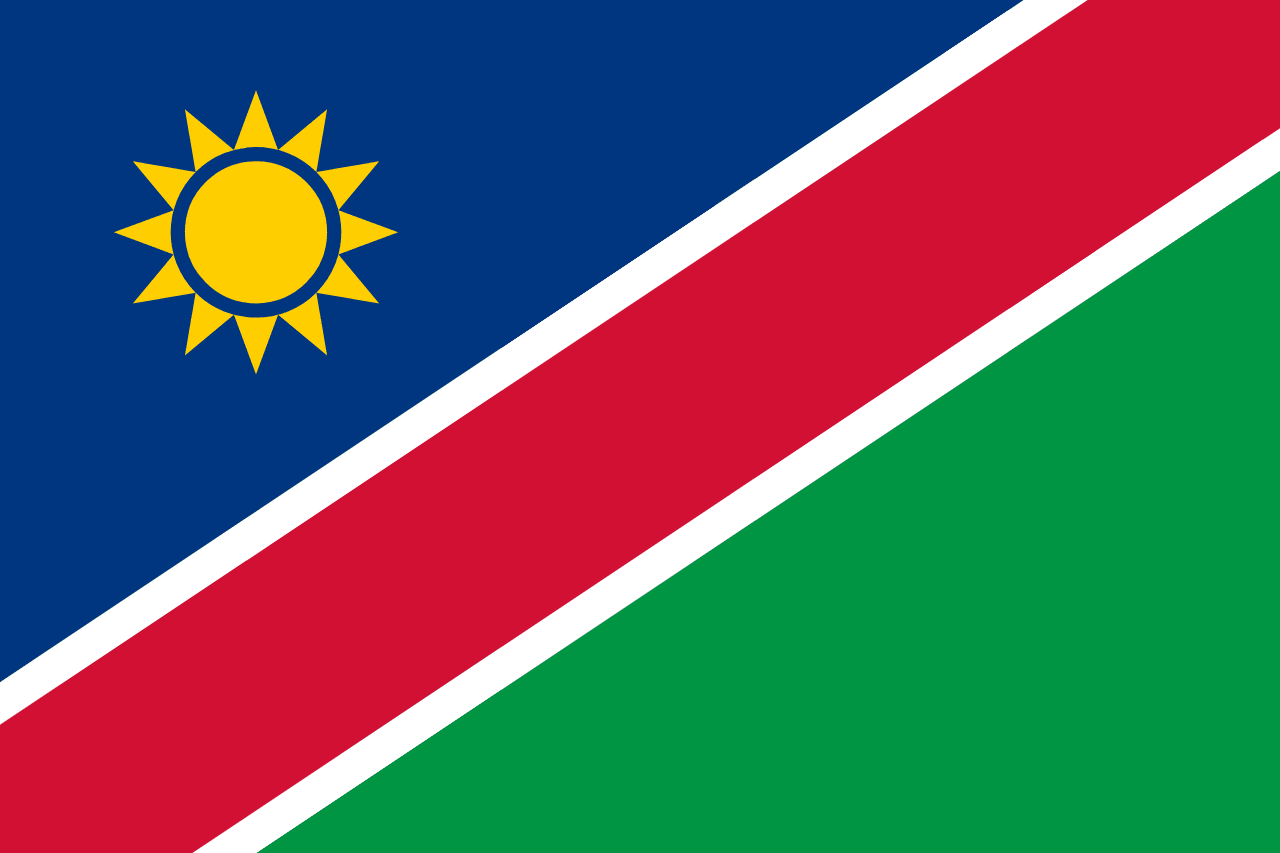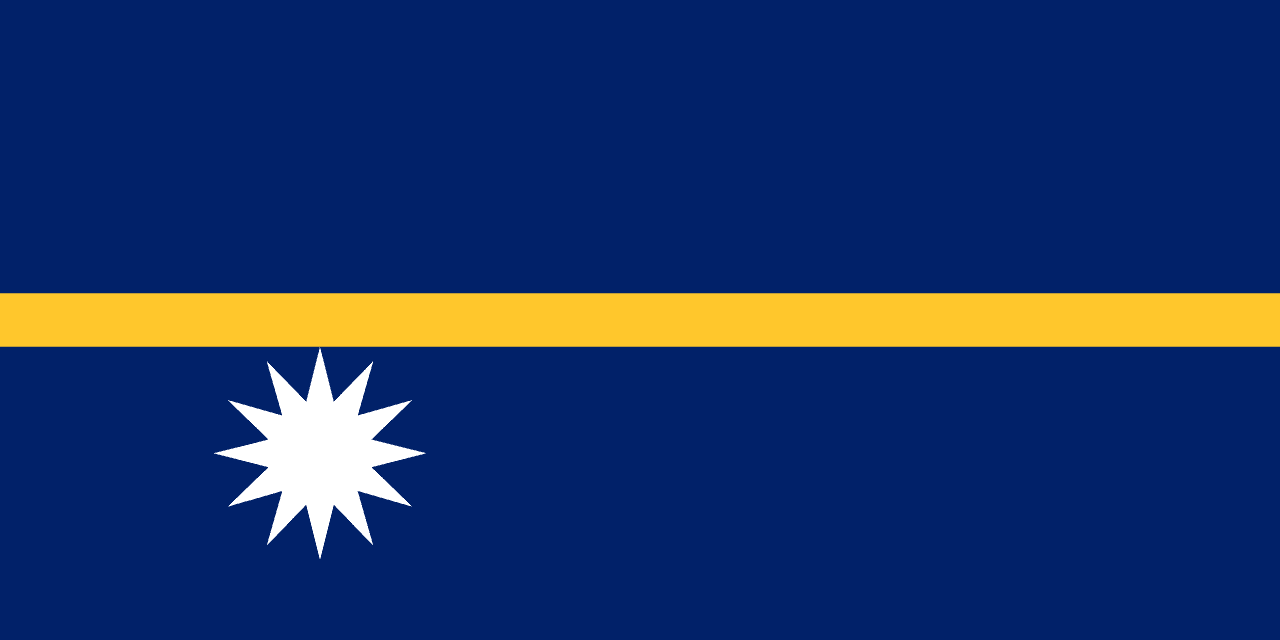The flag of Nepal stands out as one of the most unique national flags in the world, being the only non-quadrilateral national flag. It consists of two overlapping triangular pennants, with a white crescent moon in the upper section and a white sun with twelve rays in the lower section, both set against a crimson background with blue borders.
Nepal information
| National Flag Day | December 16 |
| Sovereign state | Yes |
| Official name | Federal Democratic Republic of Nepal |
| Capital | Kathmandu |
| Population | 31,551,428 |
| Area | 147,516 km² |
| Currency | Nepalese rupee (NPR) |
| Language | Nepali |
| Continent | Asia |
| Region | South Asia |
| Subregion | Himalayan |
| Borders | China, India |
| Timezone | Nepal Standard Time (NST) UTC+05:45 |
| Calling code | +977 |
| Top-level domain | .np |
History of the Nepalese flag
 The current design of Nepal's flag has been in use for over two centuries, with its official adoption dating back to December 16, 1962, when it was standardized under the constitutional monarchy. The flag's distinctive shape and symbolism, however, have much deeper roots in Nepalese history and culture. Its basic elements can be traced back to the 19th century, representing the long-standing sovereignty and independence of Nepal, which was never colonized.
The current design of Nepal's flag has been in use for over two centuries, with its official adoption dating back to December 16, 1962, when it was standardized under the constitutional monarchy. The flag's distinctive shape and symbolism, however, have much deeper roots in Nepalese history and culture. Its basic elements can be traced back to the 19th century, representing the long-standing sovereignty and independence of Nepal, which was never colonized.
Symbolism and design of the Nepalese flag
Every aspect of Nepal's flag is rich with symbolism:
- The crimson red color represents the bravery of the Nepalese people and is the national color of Nepal.
- The blue border symbolizes peace and harmony.
- The two triangular pennants represent the Himalayan Mountains and Nepal's two predominant religions: Hinduism and Buddhism.
- The crescent moon in the upper pennant symbolizes the cool and calm nature of the Nepalese people.
- The sun in the lower pennant represents the fierce resolve of the nation.
- Together, the sun and moon also express the hope that Nepal will endure as long as these celestial bodies.
Usage and significance of the Nepalese flag
 The flag of Nepal is a source of immense national pride and is prominently displayed throughout the country. It flies on government buildings, schools, and during national celebrations. The flag's unique design makes it instantly recognizable on the international stage, where it represents Nepal at diplomatic events, United Nations gatherings, and global sporting competitions. For Nepalese people, the flag is a powerful symbol of their nation's sovereignty, cultural heritage, and resilience in the face of geographical and historical challenges.
The flag of Nepal is a source of immense national pride and is prominently displayed throughout the country. It flies on government buildings, schools, and during national celebrations. The flag's unique design makes it instantly recognizable on the international stage, where it represents Nepal at diplomatic events, United Nations gatherings, and global sporting competitions. For Nepalese people, the flag is a powerful symbol of their nation's sovereignty, cultural heritage, and resilience in the face of geographical and historical challenges.
Interesting facts about the Nepalese flag
- Nepal's flag is the world's only non-quadrilateral national flag, making it a unique symbol in vexillology (the study of flags).
- The flag's precise construction is mathematically described in the Nepalese constitution, detailing the exact measurements and angles to be used.
- Despite its complex shape, the flag can be created using only a compass and straightedge, a fact that adds to its mystique and cultural significance.
- The current design has remained essentially unchanged since 1962, reflecting its deep-rooted importance in Nepalese identity.
- The flag's unique shape presents challenges in international flag displays, often requiring special accommodations to properly represent Nepal alongside other nations.
